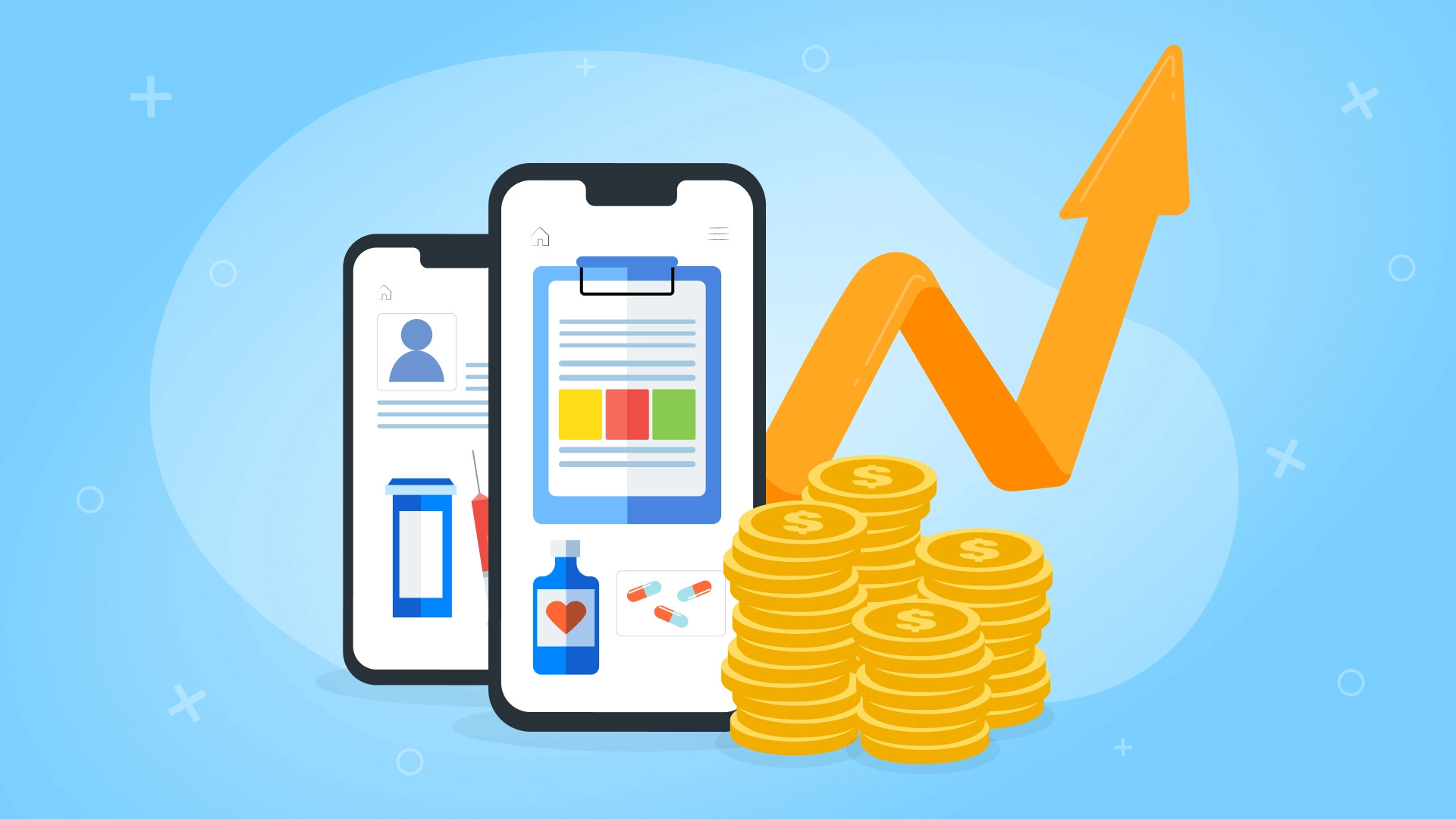

How DiGA Works in Germany: Its Role in the Healthcare System
Germany’s digital healthcare program DiGA will soon celebrate two years of implementation. Thanks to active participation, it was given the right to a long life. French President Emmanuel Macron has even said he wants to implement a DiGA Fast Track 1:1 system in the French healthcare system. Despite the praise outside of Germany, in its own country, attention to it is focused on problem areas.
What is DiGA?
With the Digital Care Act (DEU: Digitale-Versorgung-Gesetz — DVG) in December 2019, the legal framework for patient care through the Digital Healthcare Program (DEU: Digitalen Gesundheitsanwendungen — DiGA) was created. This innovation was an essential step in digital medicine. Its purpose is to support patients or providers and complement existing healthcare. “Digital assistants” open many opportunities for patients to have a healthy lifestyle.
You must have noticed this speed: from the legislative work to the market entry of the first version of DiGA, only ten months passed. A reorientation of the previously known organizational structures of state health insurance and a preliminary understanding of the tasks of self-government was required.
A major role was played by the Federal Institute for Medicines and Medical Devices (DEU: Bundesinstitut für Arzneimittel und Medizinprodukte — BfArM). Since the BfArM application portal launch at the end of May 2020, digital healthcare software developers have had the opportunity to apply for BfArM examination to include their applications in the DiGA catalog. The BfArM must decide on the application within three months.
The requirements for DiGA are defined in the Ordinance on Digital Health Programs (DEU: Digitale-Gesundheitsanwendungen-Verordnung — DiGAV) and include, for example, evidence of the safety and functionality of the programs. It is also necessary to show a positive effect when caring for patients.
In October 2020, the first DiGA successfully passed the accelerated procedure and was listed in the DiGA catalog. So far, 33 programs have been included in the standard treatment. From post-operative treatment of breast malignancies to movement therapy for patella disease and multiple sclerosis to tinnitus therapy, a wide range of digital treatment options are integrated into care. Most DiGAs currently focus on the therapeutic field of mental illness: depression, anxiety, or sleep disorders.
How do Patients Benefit from DiGA?
Once listed in the DiGA catalog, doctors, dentists, or psychotherapists can usually prescribe the program. In addition, insured persons can also apply for DiGA from their health insurance company if medically indicated. From this point on, insured persons are also legally entitled to receive DiGA. But what does the delivery process look like? Where can a patient get a prescription for the supplement? At the pharmacy, in the app store, at the doctor’s, on the new prescription platform explicitly designed for DiGA? A whole series of technical and legal details were connected with these questions. This was resolved by providing insured individuals with a prescription code from their insurance company. This will then be used to activate DiGA, downloaded for free from App Store or Google Play, on the relevant end device.
How is the Benefit of DiGA Evaluated?
Evidence-based benefit assessment has fundamental requirements and standards that must be followed in DiGA. Manufacturers are obliged to prove the positive effect of their product offer. The positive impact of the proposal is demonstrated by:
medical benefit (improvement of health status, reduction of disease duration, prolongation of survival, improvement of quality of life);
structural and technological advances meant to the patient (reduction of disease-related stress, coordination of therapy, access to care, patient safety, medical literacy, etc.).
When evaluating medical benefits, attempts are often made to draw analogies with the evaluation of medicinal products. For the first time, criteria other than mortality, etc., must be considered in the assessment. One faces the problem of a lack of transparent decision-making criteria for measuring benefits that now need to be defined.

The research situation for the listed DiGAs is still a bit strange. Most studies are still in the planning stage, and results to prove a benefit, i.e., a positive health effect, are mostly unavailable. If this evidence is not sufficiently documented, manufacturers can apply for provisional inclusion in the DiGA catalog. This marks the start of a twelve-month trial period to prove the proposal's positive impact. If the requirements for approval are met, an application for final admission can be submitted to the BfArM.
Statistics VS DiGA: does the System Find Feedback?
Simply “digital assistant” or DiGA is changing healthcare for more active participation of patients. Currently, a positive effect appears, especially in the practice of psychotherapeutic assistance. When reporting on the state of care and access to psychotherapy, therapists refer to the positive impact of DiGA. Especially given the long waiting times and active support parallel to the therapy session, psychotherapists advocate care through digital health apps.
This also confirms the health insurance survey for one year of digital health applications. The survey shows that 62% of respondents are currently interested in digital health apps, 58% of physicians and therapists surveyed recommend digital health apps, and 43% of respondents relate to issues with traditional therapy offerings. In addition, more than half of those surveyed can better control their disease with a wellness program, reduce symptoms, and better understand their condition. 67% say that the app helps them better motivate themselves to perform therapeutic exercises, and 83% emphasize flexible therapy time. The “digital assistants” are used several times a week or even daily, and therapy recommendations are fully implemented through the prescription program.
The additional positive benefit of DiGA in healthcare has already been confirmed by practice. But what about treating common conditions like high blood pressure, back pain, and metabolic disorders like diabetes and obesity? Here is an example of one of the currently most used applications in the DiGA system — ViViRA — with about 90,000 subscribed patients. It treats acute and chronic back, knee, or hip pain. Therefore, DiGA skillfully copes with such cases, which gives the system an impetus for further expansion in treating major common diseases.
How does DiGA Become a Model of Success?
Especially because conventional treatments are often insufficient and DiGA is a good deal at first glance, transparency through adequate reporting is particularly important. The insured person’s care process needs to be followed, and digital therapy needs to be evaluated against previous treatment options to see what additional benefit DiGA brings to healthcare.
The DiGA market is currently owned by startups, with only one in 15 different developers not being a startup. Due to their small size and associated speed, young companies enter the market earlier than corporations. However, the application approval process involves certain costs that small companies cannot easily bear. The BfArM commission is between 5,000 and 30,000 euros, depending on the consulting services and the specifics of the applications. In addition, there are costs to meet the criteria, such as research to prove the positive effect of use, data protection, usability, etc., quickly becoming the high six-figure range.
Officially tested and listed by BfArM apps are reimbursed by the state health insurance companies (DEU: Gesetzliche Krankenkasse-Krankenversicherung — GKV). The application developer sets the price for the 90 days of use by the patient. This price is agreed upon for a year, and from the 13th month of being on the approved list, the developer must agree with the National Association of State Health Insurance Funds (DEU: GKV-Spitzenverband — GKV-SV). Some German law firms even advise developers in pricing, so the company does not suffer losses in negotiations. A convincing package of evidence on the product's benefit for patients, a reasonably set launch price, and proven negotiating partners united by a common strategy can be very comforting in a positive financial solution.

Does DiGA motivate participation, does the patient invoke it regularly, and does he use the therapy? This can support a structured and systematic process of patient feedback. The attending physician should also be consulted as to whether the patient's health improves with the use of DiGA. Regular feedback on the (health) effects of DiGA use with treating physicians is critical. DiGA, as an additional service to existing treatment, should be integrated into the existing care process to avoid duplicate and/or incorrect care. Therefore, the doctor plays an essential role as the prescriber and accompanies DiGA and its integration into existing therapy. Integration into existing supply processes will drive digital innovation.
As an adjunct to existing therapy and, therefore, not a substitute for medical treatment, DiGA cannot shake personal relationships of trust. Contrary to what was initially assumed, DiGA does not affect the doctor-patient relationship, which is based on faith. Therefore, the previous reluctance of doctors to prescribe DiGA cannot be solely related to this. Federal Joint Committee Guidelines consult for diagnosis and appropriate treatment for many clinical presentations. Guidelines for the treatment of obesity have recently been published. One approach would be integrating existing guideline-based obesity DiGA as part of the treatment. Guidance on when and how the use of DiGA makes sense and how it can be integrated into an existing treatment pathway would be a step towards greater acceptance.
From April 1, 2023, DiGA software developers must enable data export to the electronic patient record (ePA) — the Federal Ministry of Health service. Insured persons decide with what frequency or in which cases they agree to data transfer from DiGA to ePA. However, regular data transfer is vital for better healthcare. It would be more effective if patients had the option to agree to an automatic transmission. As a result, the attainment of goals or discontinuation of therapy in digital health applications could be better monitored.
What’s Next in German Digital Healthcare?
On September 16, 2022, “DiGA International Summit” will be held in Berlin, aimed at digital health companies, developers, and politicians from all over the world, to outline the DiGA Fast Track and its future steps in detail. Soon, the BfArM is preparing an additional, comprehensive guide on the DiPA innovation. DiPAs are digital nursing applications that open possibilities to stabilize or improve the health status of patients or to improve communication with relatives and care professionals. As such, DiPAs are “digital assistants” that can be used by care recipients or when care recipients interact with relatives, other voluntary caregivers, or ambulatory nursing facilities.
DiPA will differ from DiGA in terms of prescription availability. While access to DiGA requires a prescription from a doctor, users of digital nursing apps need to apply to the long-term care fund. This fund will then reimburse up to €50 per month to cover expenses.
Conclusion on the Topic
Looking back on two years of DiGA, Germany shows that it has succeeded in rapidly integrating digital innovation into the care system through supporting processes. DiGA will find widespread acceptance if there is a collaboration with the treating individual, and DiGA is considered part of planned healthcare. Regular monitoring of care improvement is essential to strengthen individualized patient care and active patient participation.
Tell us about your project
Fill out the form or contact us

Tell us about your project
Thank you
Your submission is received and we will contact you soon
Follow us
